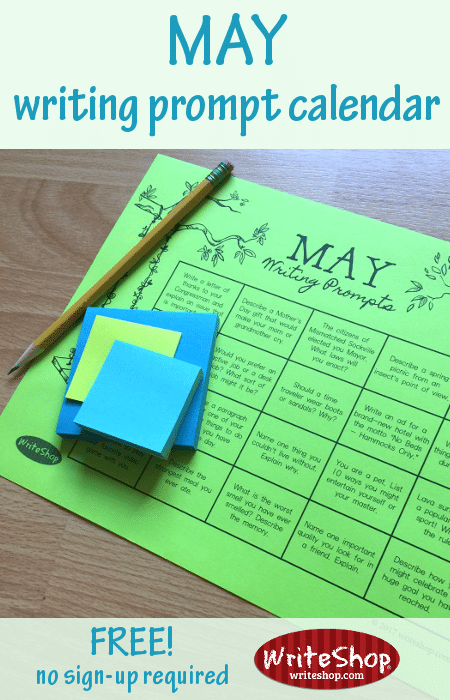
This option also allows the CTA button to be more concise because it clearly outlines the key information users need to complete the action. The simple exclamation mark at the end emphasizes the lack of financial commitment needed from users to join and adds enthusiasm. It’s informative because it’s clear to the user what they’re doing (together with the button copy). ‘Join’ helps create a sense of community, which is inviting. It’s free!” is the most effective option.

#MAY WRITING CHALLENGE FREE#
You can repeat this process for any copy that you think would benefit from multiple options.įor example, my 3 rewrites for the sign-up screen title “New user? Sign up for a free profile now” were:īased on the voice attributes and placement of this copy within the user journey, “Join Catawiki. I did this by coming up with three different revisions corresponding to each brand voice attribute and then narrowing it down to the copy that was most appropriate for that component in context.

For the sake of time and efficiency, it’s best to acknowledge this approach during a challenge by creating revision options. UX Writing is an iterative process, one that relies on testing, validating, and feedback. Much like with UX design, in UX Writing the first thing you come up with will rarely be the final version. Sign in screen Write your copy revisions and show your reasoning It’s important to articulate why you’ve identified certain things as pain points so that you can back up the revisions you make later on by showing how they address these pain points. What’s working? What isn’t - and why? Identifying pain points will help you focus on what needs to improve. It’s expected that you’ll have questions, which illustrates your approach to solving problems and helps show that you can think critically about a user-centred project. Find out what information you need to clarify or validate I broke up the two screens according to the two target users, new (sign up) and returning (log in). Who are the users? When do they see this screen? What are they trying to do? How does the company want to sound? I started by identifying the user goals and needs, context, and the purpose of the components that were in the interface.

Start by using the classic design thinking approachĪsk the right questions and outline the information the challenge brief gave you. I included an outline of my process with my final challenge The challenge was completed remotely due to COVID-19. Goal: To make it easy for registered users to sign in and to encourage new users to register and create an account.Īudience: Registered and non-registered users. Make sure to add comments to explain your copy decisions. Take a look at the page below and rewrite any copy that you feel could improve. As part of this process, they’ve asked you to rewrite the copy. Your team is working on revamping the sign up/sign in page of the website.

This is the information included in the challenge brief: To help future job applicants, here’s how I tackled the challenge. I recently completed such a challenge and despite the abundance of articles on the process for UX design roles, I had a hard time finding resources focused on UX writing tasks. This is your chance to put your writing skills to practice while showing the team how you collaborate and problem-solve. Drawing from the standard practice in UX design, your potential employer may give you a challenge during the interview process for a UX writing position. It’s still figuring itself out as a discipline, which means there are many different approaches to the process of writing UX copy. The user experience (UX) writing field is growing rapidly but remains relatively new in the greater ecosystem of UX.


 0 kommentar(er)
0 kommentar(er)
